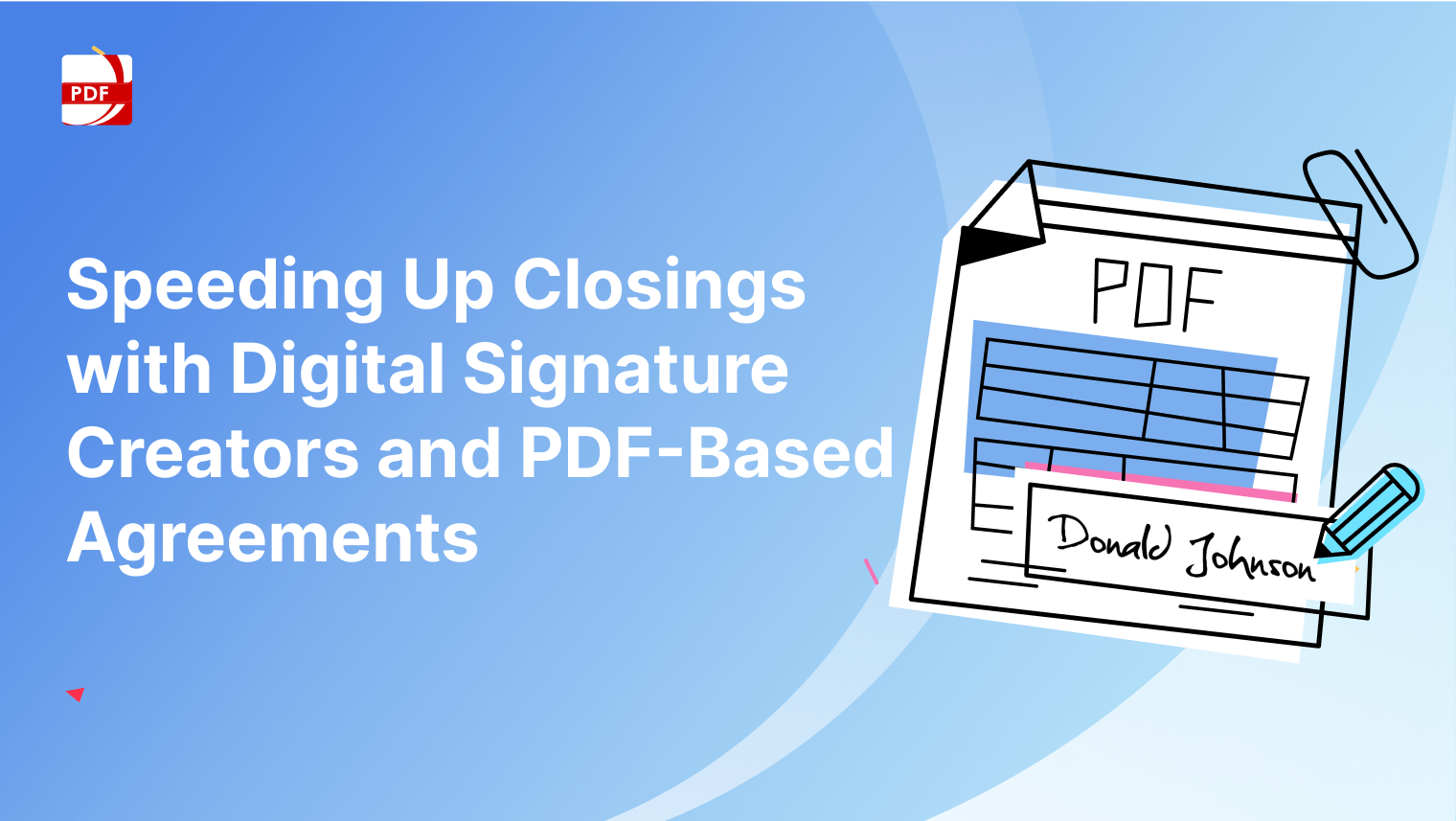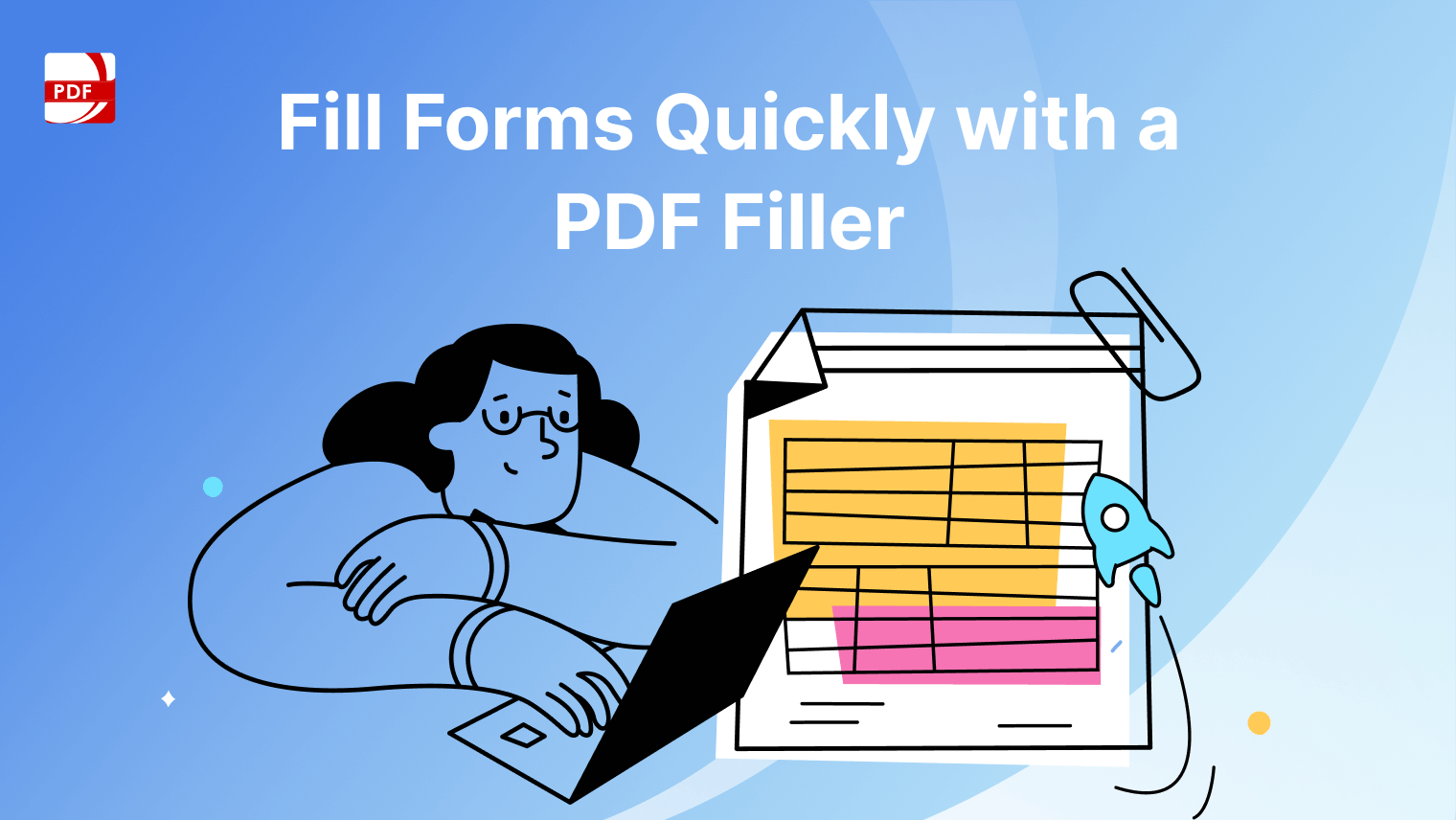Selecting the appropriate file format is essential for publishers and readers alike. The two most widely used formats are EPUB (Electronic Publication) and PDF (Portable Document Format).
Determining which of these formats best fits your needs requires an understanding of their distinctions.
Understanding PDF and EPUB Files
PDF Files: The Standard for Fixed-Layout Documents
PDFs, developed by Adobe, are renowned for their fixed-layout format. This consistency in appearance, irrespective of device or screen size, makes PDFs an ideal choice for documents where precise layout and formatting are key.
Typically, this includes a wide range of documents such as official forms, professional eBooks, and magazines, where maintaining the original design is essential.
PDFs ensure that the visual integrity of the document is preserved, making them a reliable format for high-quality, professional-looking documents that require a specific layout, such as reports, brochures, and graphic-rich content.
EPUB Files: The Flexible eReader Format
In contrast, EPUB is a format tailored for digital publishing and eReading. Its primary feature is its reflowable content, which dynamically adjusts to fit various screen sizes.
This flexibility makes EPUB files particularly suited for reading on a diverse range of devices, from smartphones to dedicated eReaders. The adaptability of EPUBs enhances the reading experience, especially for lengthy text-based content like novels or educational texts, as it allows for easier navigation and readability across different devices.
This format is designed to make digital reading as comfortable and user-friendly as possible, accommodating various font sizes and screen dimensions.
Key Differences: Usability and Compatibility
Layout and Design Flexibility
PDF: Ensures a consistent visual experience by maintaining the original layout and design across various platforms. This fixed layout is particularly beneficial for documents with intricate designs, including newsletters, graphic novels, and technical manuals.
EPUB: Adapts to different screen sizes, enhancing the readability of text-heavy documents. This flexibility is ideal for novels, educational materials, and any document where ease of reading takes precedence over design elements.
Accessibility and Usability
PDF: While offering high-quality visual fidelity, PDFs can be less user-friendly on smaller screens, often requiring zooming and scrolling, which can disrupt the reading flow.
EPUB: Prioritizes the reader's experience by adjusting the layout to the device's screen, thus improving accessibility and ease of use, especially on mobile devices and eReaders.
Multimedia and Interactivity
PDF: Supports a range of multimedia elements and interactive features, making it suitable for interactive reports, instructional materials, and digital brochures.
EPUB: Besides supporting multimedia, it offers better integration with reflowable text, ensuring that interactive elements enhance rather than disrupt the reading experience.
Compatibility
PDF: Its widespread compatibility across various devices and operating systems makes it a versatile choice for a broad audience.
EPUB: Requires specific eReader applications or devices, which may limit accessibility but offers a more tailored reading experience for digital publications.
Choosing Between PDF and EPUB
Purpose of the Document
PDF: Opt for PDF when dealing with documents that require a consistent and fixed layout. This includes professional reports, legal documents, graphic-rich materials, and forms where precise alignment and formatting are crucial.
EPUB: Choose EPUB for documents where text readability and adaptability are priorities. This is particularly relevant for eBooks, novels, and educational texts that benefit from reflowable text to accommodate different screen sizes.
Audience and Device Compatibility
PDF: Ideal when your audience is likely to view the document on a computer or in printed form. PDFs are universally accessible on various platforms without the need for specific eReader software.
EPUB: Better suited for an audience that predominantly uses eReaders and mobile devices. EPUB's flexibility in adjusting text to the screen size enhances the reading experience on these devices.
Content Type and Layout Requirements
PDF: When your content includes complex layouts, images, and needs to maintain a specific design, PDF is the preferred choice.
EPUB: For text-centric content, where the focus is on the ease of reading and the ability to adjust font sizes and layouts, EPUB is more appropriate.
How To Read EPUB Files on PDF Reader Pro for Windows
Step 1: Convert EPUB to PDF
Use an online conversion tool to convert the EPUB file into a PDF format.
Step 2: Open PDF Reader Pro
Launch PDF Reader Pro on your Windows device.
Step 3: Load the Converted File
Navigate to 'File' > 'Open', or drag and drop the converted PDF into the program.
Step 4: Read the Document
Utilize PDF Reader Pro's features to read and interact with the converted document.
How To Read an EPUB File on PDF Reader Pro for Mac
Step 1: EPUB to PDF Conversion
Convert your EPUB file to a PDF using a conversion tool such as Calibre or an appropriate online converter.
Step 2: Start PDF Reader Pro
Open PDF Reader Pro on your Mac.
Step 3: Open the Converted PDF
Select 'File' and then 'Open', or drag the PDF file directly into PDF Reader Pro.
Step 4: Engage with the Content
Read and explore the document using the features offered by PDF Reader Pro.
PDF and EPUB: FAQ
What are the key accessibility features of PDF and EPUB formats?
Both formats prioritize accessibility in mind. EPUBs generally offer better support for reflowable text and compatibility with screen readers, while PDFs can be made accessible with additional formatting.
How do cloud-based content platforms influence the use of PDF and EPUB?
Cloud-based content platforms enhance the sharing and accessibility of both PDF and EPUB files, allowing users to access files from multiple devices with synchronization.
Do PDF and EPUB support multiple directions of characters for different languages?
Yes, both formats support the direction of characters for languages that require right-to-left or vertical text, such as Arabic and Japanese.
Can expert teams easily edit PDF and EPUB files?
Yes, with appropriate file editing tools, expert teams can modify both PDF and EPUB files, though PDFs often require more specialized software for extensive editing.
Is there a significant difference in file size between print books and their digital counterparts in PDF or EPUB format?
Digital files, whether PDF or EPUB, tend to have a smaller file size compared to the physical space of print books. However, PDFs with high-resolution images can be larger-sized files.
What is the role of interactive XML format in EPUB conversion?
EPUB uses interactive XML format for structuring content, which is beneficial in the conversion process, especially for ensuring proper layout and accessibility features.
How do you choose the preferred type of file for your content between PDF and EPUB?
The choice depends on the content and intended use: PDFs for fixed-layout content like magazines, and EPUBs for reflowable text content like novels.
What are some considerations for managing content files in digital paper formats?
Considerations include the balance between file size and quality, especially for multimedia elements, and the format's suitability for the target file type, whether it's for e-books or digital paper.
How does file extension impact the choice between eBook file formats?
The file extension (.pdf for PDF and .epub for EPUB) indicates the file's capabilities, such as reflowability and interactive elements, influencing the choice based on the user's needs.
What advantages do EPUB files have over PDF files in certain scenarios?
EPUB files offer advantages in readability on mobile devices and better reflowable text support, making them more suitable for e-book publishers and readers who prioritize flexibility and accessibility.
Benefits of Choosing PDF Reader Pro
- All-Inclusive Access: Unlock every premium tool immediately upon subscribing.
- AI Feature Credits: Receive 600 AI credits with your subscription to leverage advanced tools.
- Dedicated Assistance: Access step-by-step guidance for an effortless setup and usage experience.
- Multi-Device Compatibility: Enjoy seamless access across up to four devices simultaneously.


